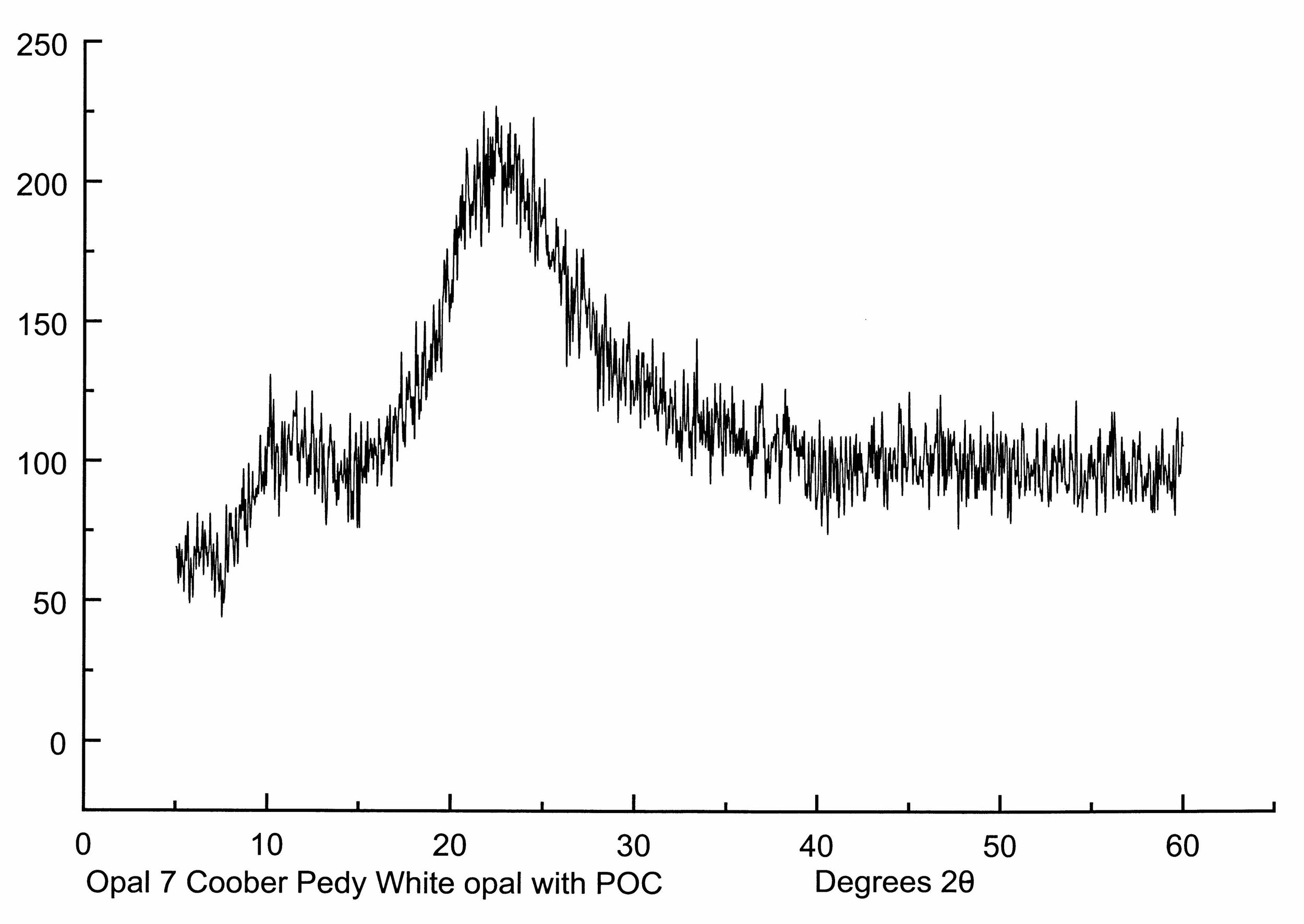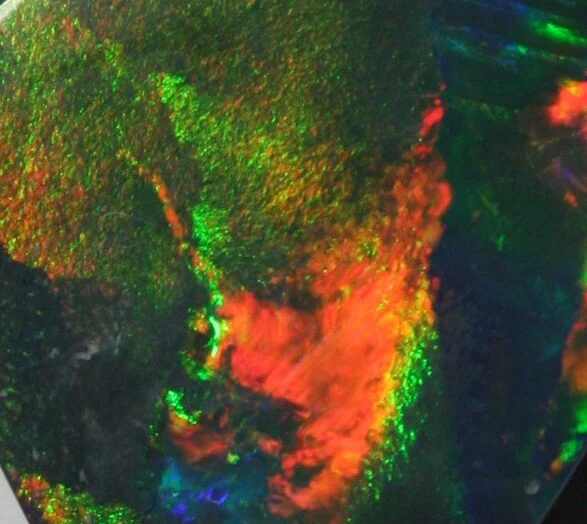Mineralogical Classification
The original types of opal for the mineralogical classification that are found in most textbooks contain a combination of some of the terms already discussed above as well as some terms descriptive of the phenomena seen in different opals such as sheen (girasol opal) or inclusion (moss opal). However with the discovery of the structure of opals in 1965 at the CSIRO, Segnit et al proposed a new mineralogical nomenclature in which types of opal are based on the opal structure as revealed by X-Ray diffraction techniques. This classification is Opal-A, (amorphous type), Opal-CT (cristobalite/tridymite type), and Opal-C (cristobalite type). Further and more recent research work has lead to the subdivision of Opal-A into two groups, Opal-AG (amorphous gel type structure) and Opal-AN (amorphous network type structure).
Old Mineralogical Classification (Dana’s Mineralogy, Frondel 7th edition 1962).
Precious opal or Noble opal, is opal that shows a play of colour.
Common opal is opal that does not show a play of colour.
Fire opal is precious opal with a distinctly red or orange play of colour in an opal with a red or orange body colour, typically found in Mexico.
Girasol opal is a type of transparent crystal opal that shows a rather uniform bluish or reddish floating wavy internal play of colour. It is probably similar to the Australian colloquial term of “jelly opal”.
Hyalite opal is opal that is colourless and transparent like glass. It often occurs as crusts with a globular, botryoidal or reniform surface.
Hydrophane opal is opal that is white or light coloured opal that becomes transparent when immersed in water.
Tabasheer opal is opal that is found as white “milky” opaline silica deposited in the joints of the bamboo plant.
Cachalong opal is opal that is opaque, white to yellowish with a mother of pearl lustre.
Present Day Mineralogical Classification (jones and segnit-based on x-ray diffraction - 1971)
Opal C is opal that is natural hydrous silica, which shows an XRD pattern of “well ordered” α-cristobalite (structure) with only a small amount of line broadening and minor evidence of tridymite. These are typically opals all of which occur associated with lava flows, and subsequent reheating by later lava flows is likely.
Opal CT is opal that is natural hydrous silica and is a combination of “disordered α-cristobalite and disordered α-tridymite” structure as shown by XRD. Types of opal and opaline silica that fall into this category are most “common” opals. Rare occurrences of precious opals showing play-of-colours may fall into this group. (Curators Note: it would now seem that there are a substantial number of precious opals in world occurrences that fall into this group, more information will be posted later!)
Opal A is opal that is natural hydrous silica, which is described as “highly disordered near amorphous”, structure as shown by XRD. These are most opals which show a play-of-colour (precious opals) and also their associated potch opal. Also found in this group are most diatomites, geyserites and glass clear hyalites.
Opal A has since been divided into two sections:
Opal AG is opal that is formed from solution by a process of slow concentration through evaporation and condensation to colloidal silica followed by aggregation of the colloidal silica particles. These are typically ‘Precious opals’ found in the sedimentary geological environments in Australia.
Opal AN is opaline silica that is deposited as thin botryoidal crusts on volcanic rocks by quenching from high temperature silica fluids. A natural hydrous silica in which the silica shows a continuous random network of silica as seen in a glass structure. This type of silica is typically seen as “Hyalite” or Libyan desert glass”.
references
“The nature of opal nomenclature and constituent phases” Jones, JB and Segnit, ER. Journal of the Geological Society of Australia. Vol18, No.1, pp57-68, 1971.
An example of the XRD pattern for Opal-A as described above.
An example of the XRD pattern for Opal-CT as described above








